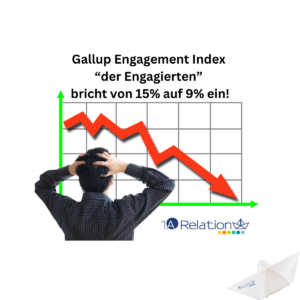Why is decision-making so difficult?
Decisions are essential to the success of a business, but their complexity can be a major burden for managers. In fact, managers spend up to 40% of their time making decisions, often without any recognizable benefit. Inefficient decision-making costs Fortune 500 companies millions of dollars every year because managers waste time. Why is decision-making so difficult?
Excursus on software selection and decision-making
What are the most common aspects that make software decisions difficult? Why is deciding so difficult?
- Complexity of requirements:
- Different departments have different needs and it is difficult to find a solution that meets everyone’s needs. This means deciding on one (software) for all (all in one) or selecting the best individual solutions (best-of-breed). We have written a detailed article on this.
- Rapid technological developments:
- The market is developing rapidly, which makes it difficult to assess the long-term relevance and sustainability of a software. In this context, we refer to a graphic by Scott Brinker, the MarTec-Law-Chart.
- Cost-benefit analysis:
- The high investment costs are often disproportionate to the possible benefits, which leads to decision-making difficulties. We always recommend a 5-year calculation. This is a spreadsheet with about 70 Excel rows and 10 key cost parameters. If you want to know more, please contact us.
- Integration and compatibility:
- New software often has to be seamlessly integrated into existing systems, which can pose technical challenges and incur additional costs. Yes, the topic of interfaces and the costs for networking with uni- or bidirectional interfaces are difficult to estimate. This is related to aspect 3 on the one hand and aspect 1 on the other. However, there is now good API technology available. Or it is worth setting up a CDP or DMP.
- Risk avoidance and responsibility:
- Wrong decisions in software selection can be costly and damaging to a company’s image, which is why many managers hesitate and fall back on “safe” options. Yes, a software decision can – including project and service provider costs – bring a company to the brink of ruin or madness – or both. That’s why we recommend booking our neutral, vendor-independent expertise for the selection and implementation. Then it will work. Because nobody has to do such a project a second time: neither the CEO, nor the CFO, nor the teams.
The solution to Why is deciding so difficult?
Agile organizations show how to optimize decision-making processes and delegate responsibility in a targeted way. By categorizing decisions according to risk and frequency, the effort involved can be minimized.
McKinsey identifies three central decision types:
- Big-bet decisions: Rare, high-risk decisions (e.g. acquisitions) should be made through productive debates at the highest level.
- Cross-cutting decisions: Recurring decisions (e.g. pricing) benefit from clear objectives and coordinated processes between departments.
- Delegated decisions: Frequent, low-risk decisions that are best made by teams or individuals close to the work level promote efficiency and a sense of responsibility.
3 tips on why making decisions is so difficult
- Prioritize decisions and streamline meetings:
- Only truly important decisions should be made by top management. Unnecessary meetings should be avoided or replaced by clearly structured updates to make better use of time resources.
- Delegate decision-making authority to the front lines:
- Delegate decisions directly to the teams closest to the work whenever possible. This increases speed and efficiency, strengthens accountability, and reduces management decision fatigue.
- Recognizing and avoiding bias:
- Train managers to recognize and avoid common biases such as confirmation bias or the sunk costs trap. This can be supported by role-playing, scenario analysis or objective decision criteria and leads to more informed decisions.
- From time to time, invite neutral consultants as sparring partners:
- In the past, software decisions in particular were often made on a gut feeling. You knew a manufacturer or the manufacturer presented itself “very nicely”. The sentence “everything is possible, no problem” was accepted unchecked and unquestioned. That is why a clearly defined selection process and an iterative test scenario are needed.
Why is deciding so difficult? Conclusion:
To support rapid decision-making, McKinsey recommends a clear allocation of roles and the targeted use of data, without overburdening decision-making processes. In addition, prejudices such as confirmation bias, herd mentality or sunk-cost effects should be avoided. An agile and empowering corporate culture with a focus on relevant decisions helps to increase the quality of decisions and employee engagement.












